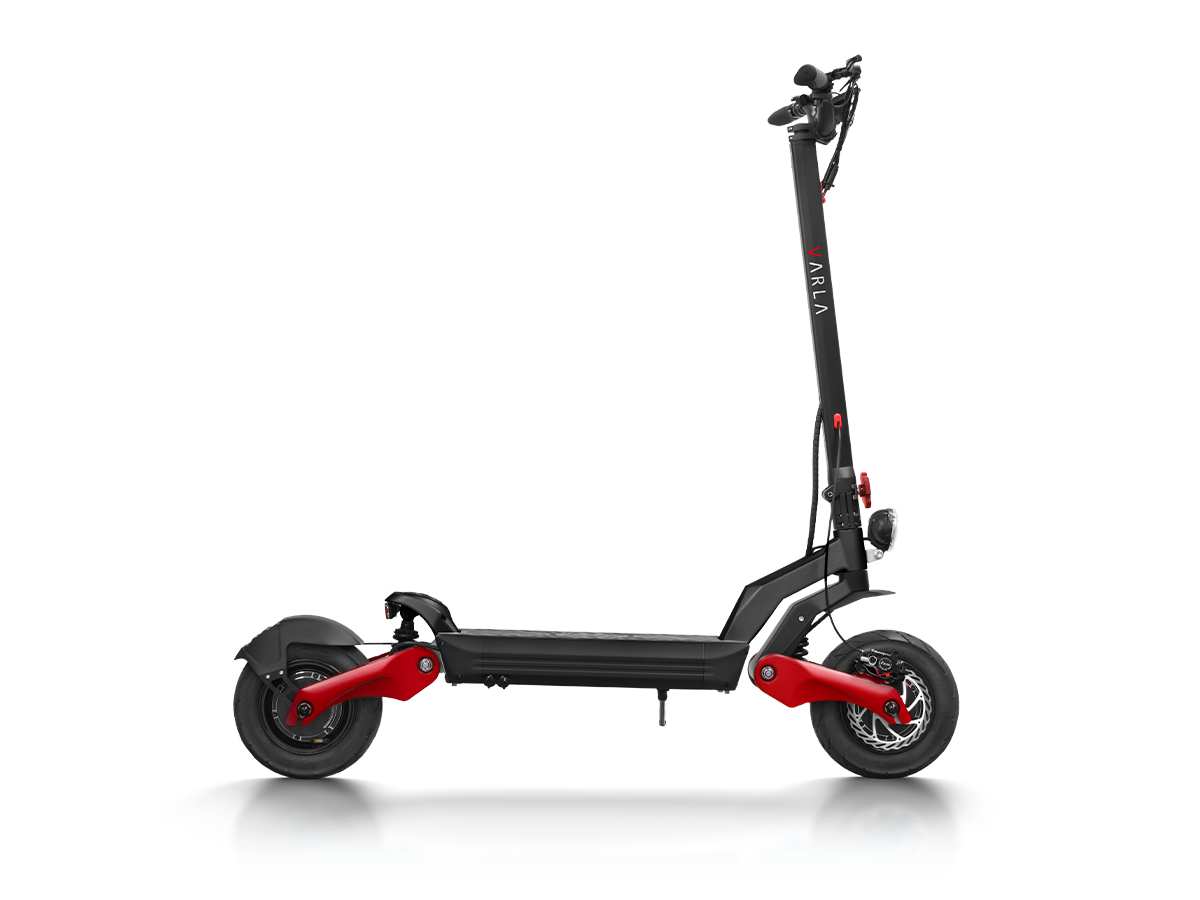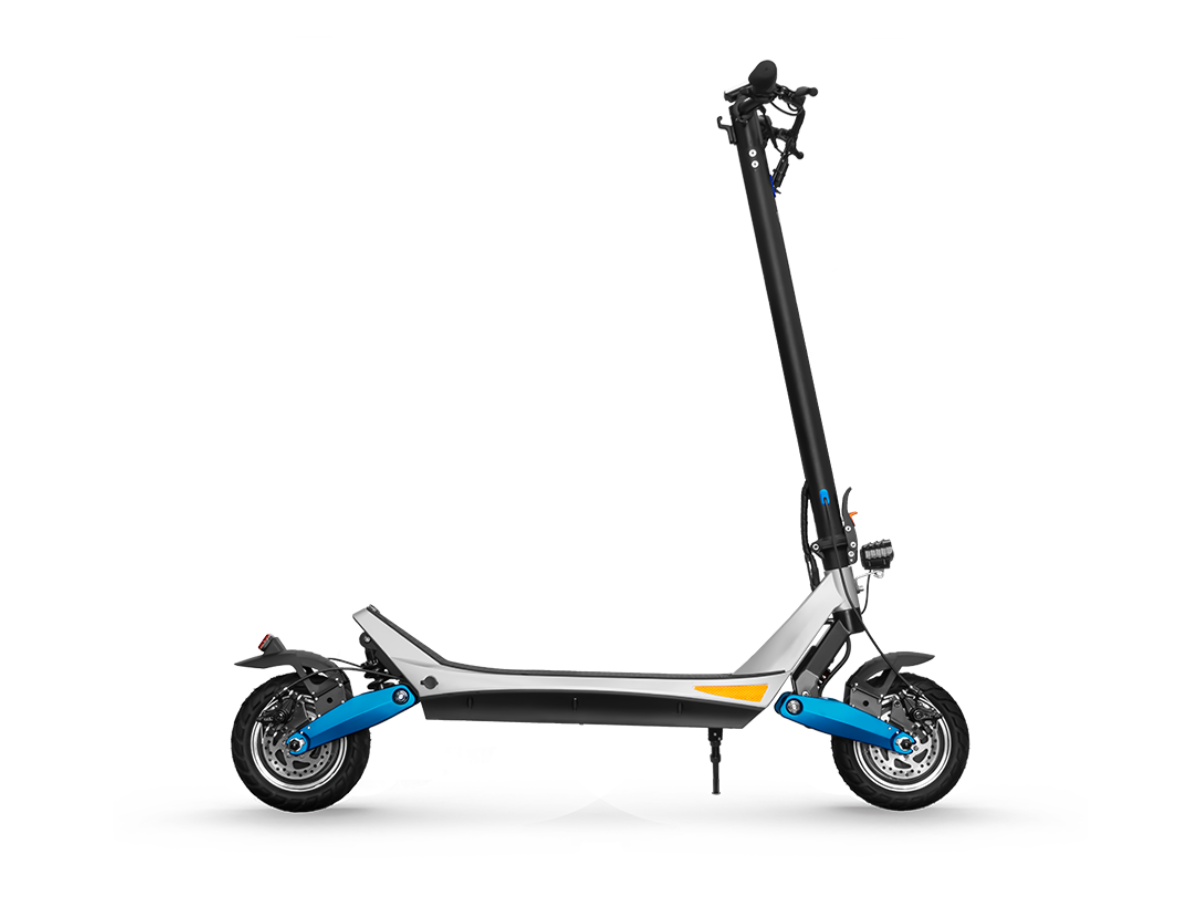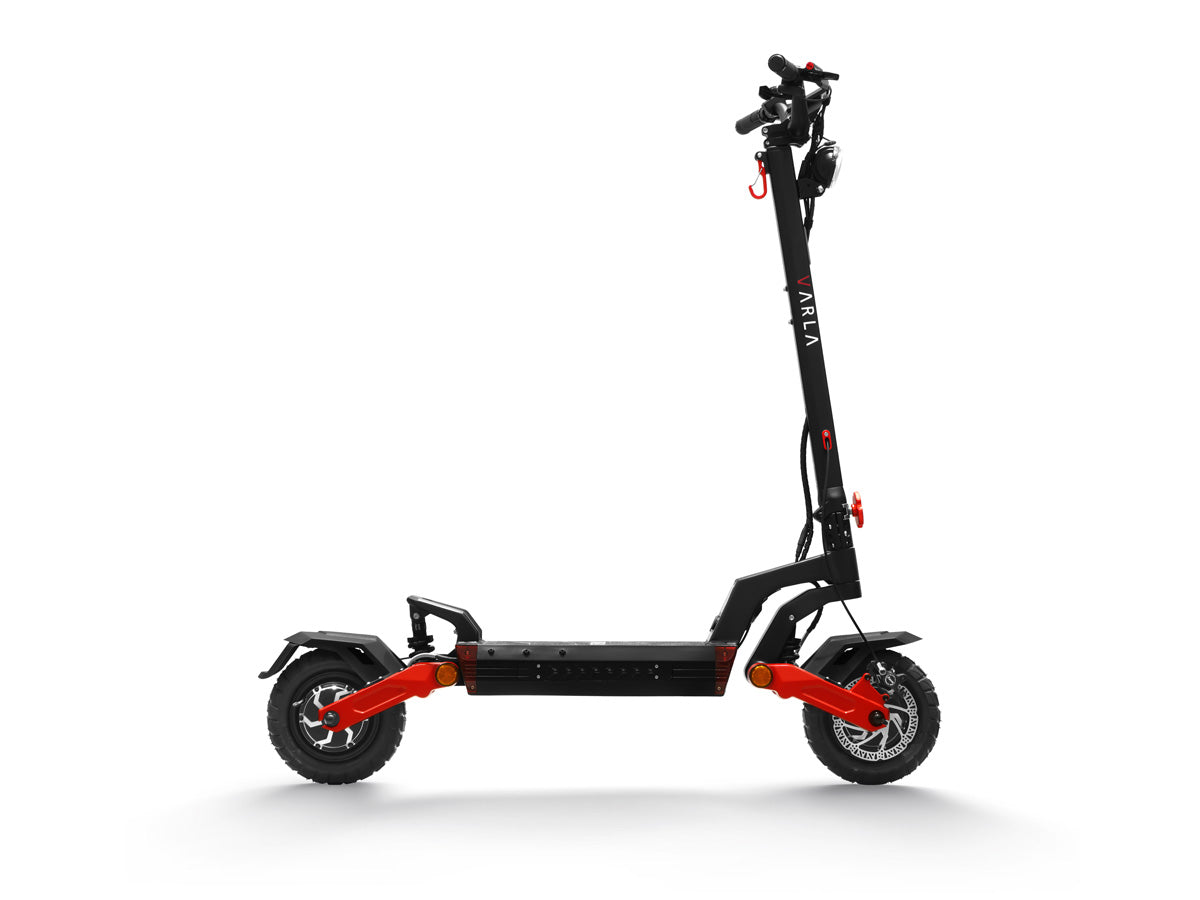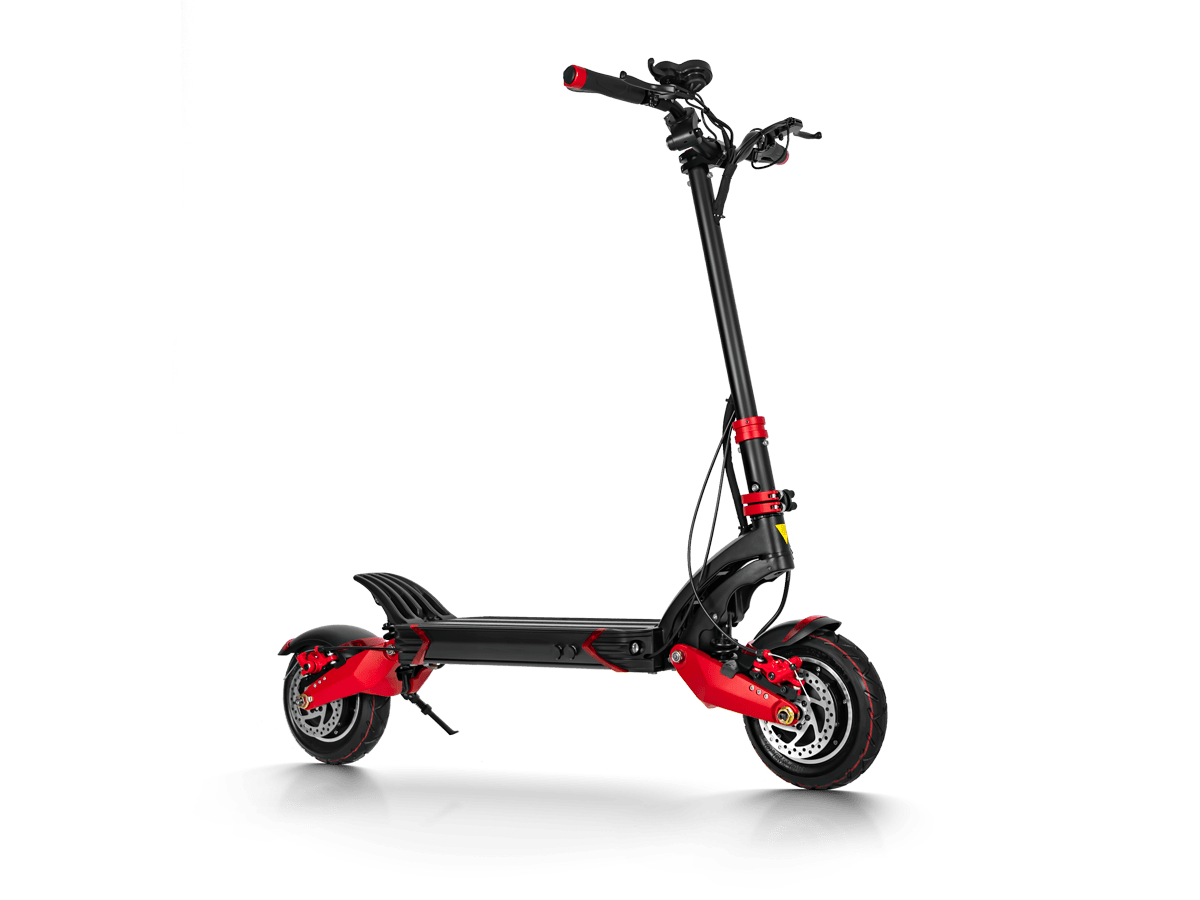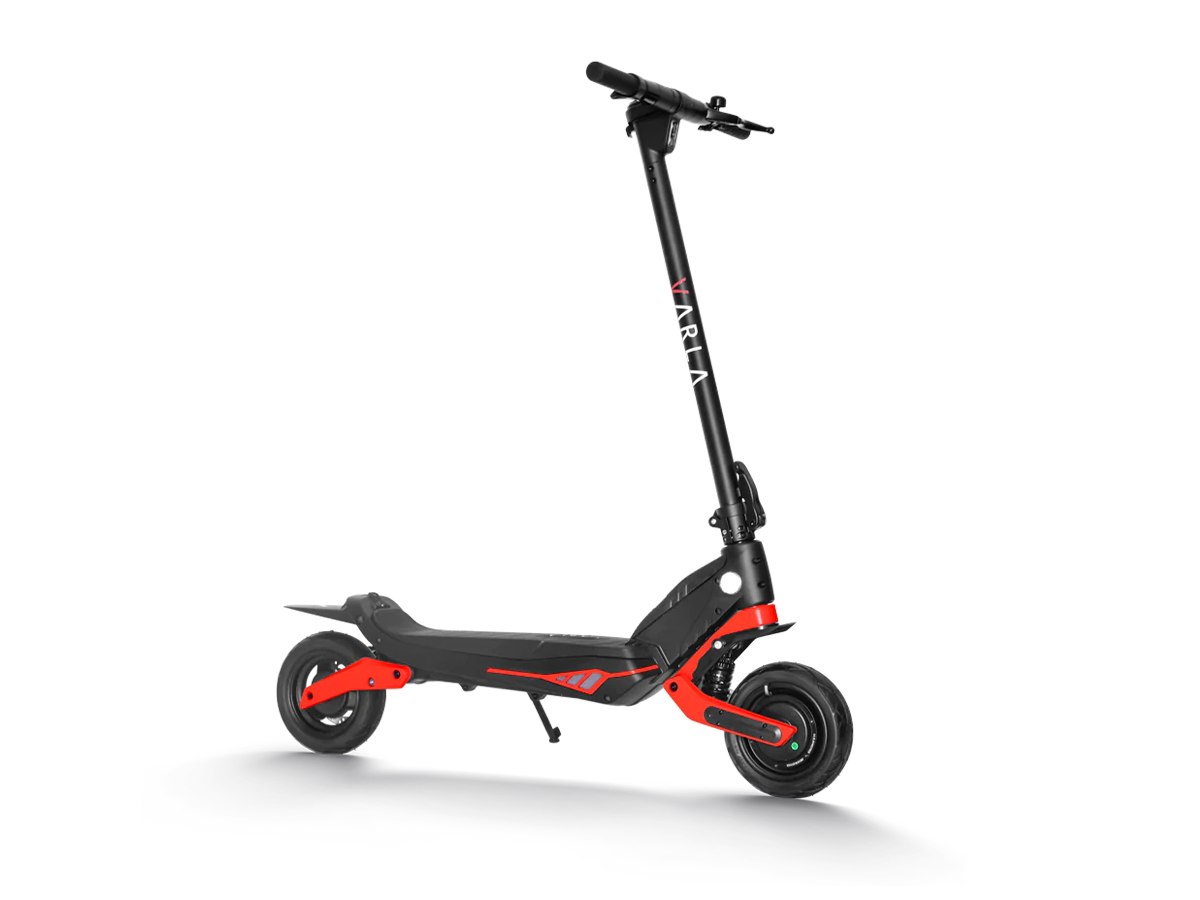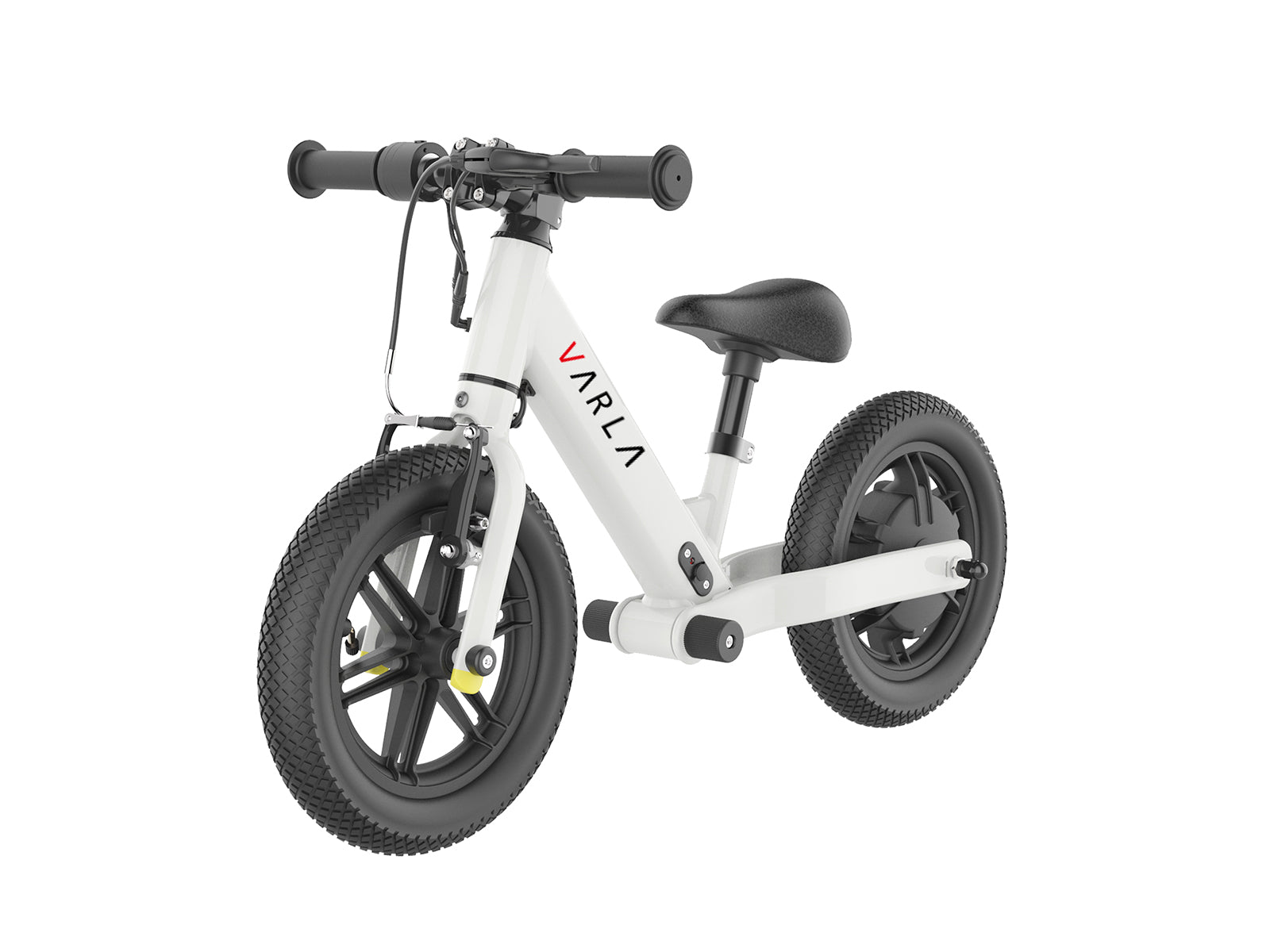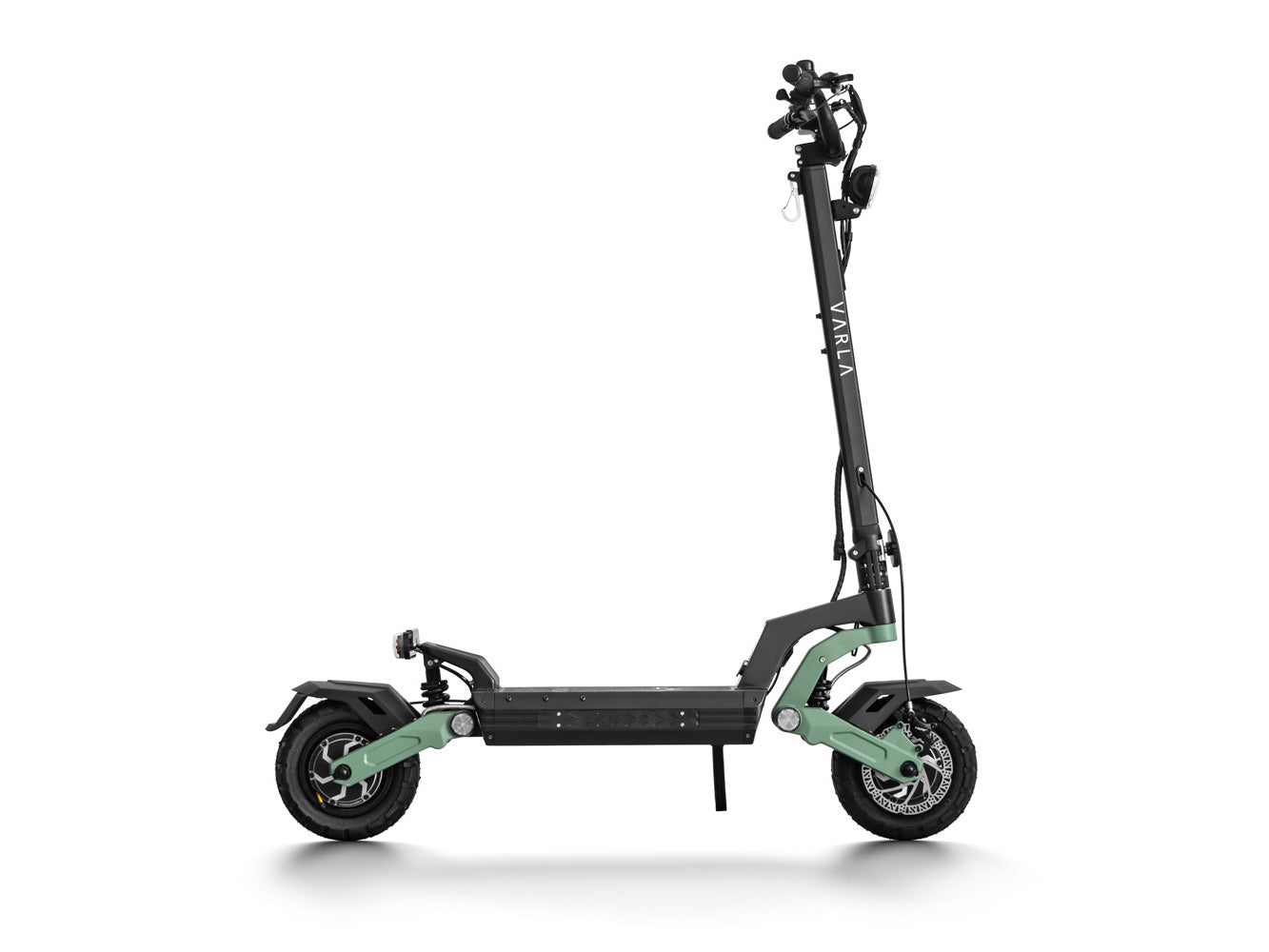
Can You Take an Electric Scooter on Public Transportation?
Varla Scooter is helping people discover new ways to getting around their city with our line of electric scooters, and this mode of transportation is becoming more and more popular. In 2018 alone, over 5 million electric scooters were sold. This market is expected to grow significantly to an estimated $14 billion by the year 2025. With an increase in usage of electric scooters, people often ask us if our electric scooters can be taken on public transportation including airplanes, trains, and buses.
Since electric scooters have limitations (for example, they can’t be driven on a freeway), most city commuters rely on other forms of transportation to supplement part of their commute. In this article, we’re going to discuss the various options available to electric scooters owners who use public transportation and how Varla designed the perfect scooter that can be taken just about anywhere.
One thing to note is that some transportation services have not updated their policies or specifically address the use of electric scooters. This article is a general guide. It’s recommended that you check with the transportation authority or carrier for regulations that apply to your area.

Factors to Consider
When planning to take an electric scooter on public transportation, it is essential to consider the size and weight of the scooter. Public transportation vehicles often have limited space, and passengers are expected to accommodate their belongings without causing inconvenience to others. A scooter that is too large or heavy may not fit easily in designated areas or may be challenging to maneuver in tight spaces. Additionally, some transportation providers may have specific size and weight restrictions in place, so it is crucial to familiarize yourself with these guidelines before embarking on your journey.
Foldability and portability are also significant factors to consider when using an electric scooter in conjunction with public transportation. A folding scooter can be more easily stored in compact spaces on buses, trains, or subways, and is generally more convenient to carry when required. A portable scooter allows for seamless transitions between different modes of transportation, enabling users to maximize their mobility and minimize the hassle of navigating through busy urban environments. When selecting an electric scooter, prioritize models that are designed with these features in mind to ensure a smooth and enjoyable commuting experience.
Lastly, it is vital to consider the battery type and adhere to safety regulations when using an electric scooter on public transportation. Some transportation providers may have restrictions on the types of batteries allowed on board, often due to potential safety hazards associated with certain battery technologies. For example, lithium-ion batteries are commonly used in electric scooters, but they may be subject to specific regulations due to their risk of overheating or catching fire. It is essential to research the battery specifications of your scooter and familiarize yourself with any relevant safety guidelines enforced by transportation providers in your area. By taking these factors into account, you can ensure a safe and hassle-free experience when incorporating an electric scooter into your public transportation routine.
Bringing an Electric Scooter on a Train
In the United States, there are several options when it comes to train service including national lines such as Amtrak or regional or local trains. Regulations may vary depending on the train authority or company that operates the train service.
Amtrak treats electric scooters the same as electric bicycles. There are no restrictions to taking a battery-powered mode of transportation on board as long as it is stowed properly. The added bonus to taking a Varla electric scooter is its size. When folded, the Varla Pegasus measures 47.2” long and 18.9” tall. This makes it very easy to place in the luggage area.
Full-size bikes must be placed in the designated bike rack. Foldable electric scooters can be carried into the passenger car and treated the same as a carry-on piece of luggage. Just make sure that your scooter doesn’t block the pathways or seats of other passengers.
One challenge that electric scooter owners may face is difficulty getting through certain doorways, automated entry kiosks, or rotating gates. This can be resolved by simply folding up and carrying your electric scooter through. If you run into challenges, ask a train employee to use the handicap-accessible entrance or gate.
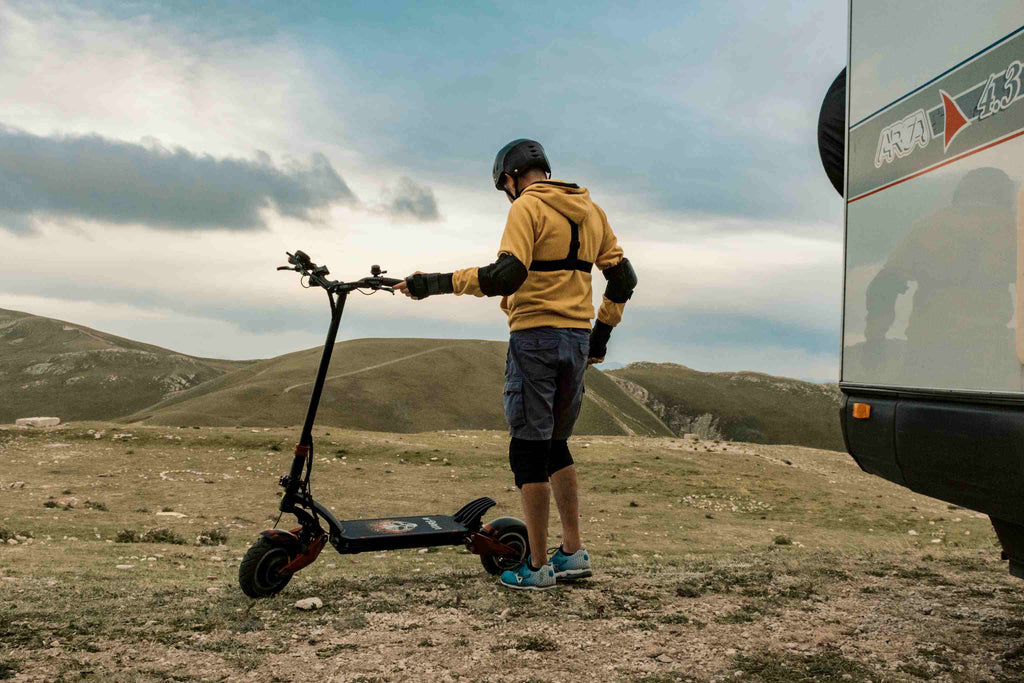
Metros, Light Rail, and Trams
Many of the same rules that apply to passenger trains are also relevant for other forms of public transportation, such as metros, light rail lines, and trams. When taking your Varla scooter on these modes of rail transportation, it is crucial to ensure that it is placed in a folded position and kept out of aisleways or other seating areas. This not only helps maintain a safe and comfortable environment for fellow passengers but also adheres to the guidelines set by transportation providers.
Unlike long-distance train travel, metros, light rail lines, and trams might not have an attendant or train employee available to assist you. Therefore, it is essential to research the specific regulations for each mode of transportation ahead of your trip. This may include checking the transportation provider's website or contacting their customer service department for information on scooter policies, size and weight restrictions, or designated storage areas.
Additionally, be prepared for the possibility of encountering crowded conditions during peak travel times. To minimize inconvenience to yourself and others, consider traveling during off-peak hours when there is likely to be more space available for your scooter. If you must travel during busy periods, be courteous and patient, and be prepared to wait for the next train or tram if necessary to ensure a comfortable and safe journey for everyone.
Electric Scooters on Public Buses
For those with a long commute, using a public bus in combination with an electric scooter can be an efficient and convenient way to travel. Most public transportation services permit passengers to bring their electric scooters on board buses. However, unlike other forms of transportation, public buses may not always have dedicated storage areas for large bags or luggage. As a result, it is essential to be mindful of the space you occupy with your scooter and ensure that it does not inconvenience other passengers.
Generally, electric scooters should be in a folded position when brought onto a bus. Depending on the size of the scooter and available space, you can either place it on your lap or under your seat. Avoid placing the scooter on an adjacent seat, as this should be kept available for other passengers. It is also crucial to ensure that the scooter does not obstruct aisleways or emergency exits, as this could pose a safety hazard.
Taxis and Rideshares
In major cities, it’s extremely common for people to use a taxi or rideshare service to get around. In most cases, there are no issues with taking an electric scooter with you in a taxi or rideshare vehicle. Ask the driver for the best place to put your Varla scooter. They will likely direct you to place the folded scooter in the trunk of the vehicle during the ride.
Taking an Electric Scooter on an Aircraft
Electric scooter is allowed to take on a plane?The FAA (Federal Aviation Administration) does allow passengers to carry batteries on flights. However, the size of the battery is limited by its watt-hour (Wh rating). Rechargeable batteries must not exceed 100-watt hours and must be placed in a carry-on bag. No rechargeable batteries are allowed to be checked in on flights. While this restriction does apply to most situations, the FAA, does allow passengers to request special approval from the airline to transport larger batteries.
To calculate the Wh rating on your electric scooter, you will need the battery voltage (V) and amp (Ah) rating. Some batteries may list amperage as milliamps (mAh). Simply divide mAh by 1,000 to find the Ah rating.
Watt-Hour calculation: Voltage (V) x Amps (Ah) = Watt-Hours (Wh)
For example, a Varla electric scooter that has a battery that is rated 48V/15.6Ah will equal 748.8 watt-hours (Wh). This does exceed the FAA’s 100 Wh limit on rechargeable batteries.
Ferries and Water Taxis
In many coastal cities, people often travel by water on ferries or water taxis. These crafts typically have a designated area for electric scooters and bikes. Most ferry terminals are very strict about people riding around the dock or on the boat. Have your scooter packed up before you approach the dock and you shouldn’t have any issues.
Unfortunately, some cities still have scooters banned since gas-powered scooters are a safety issue on the watercraft. Their regulations don’t often distinguish between gas-powered and electric models. Be sure to check the rules before you go.
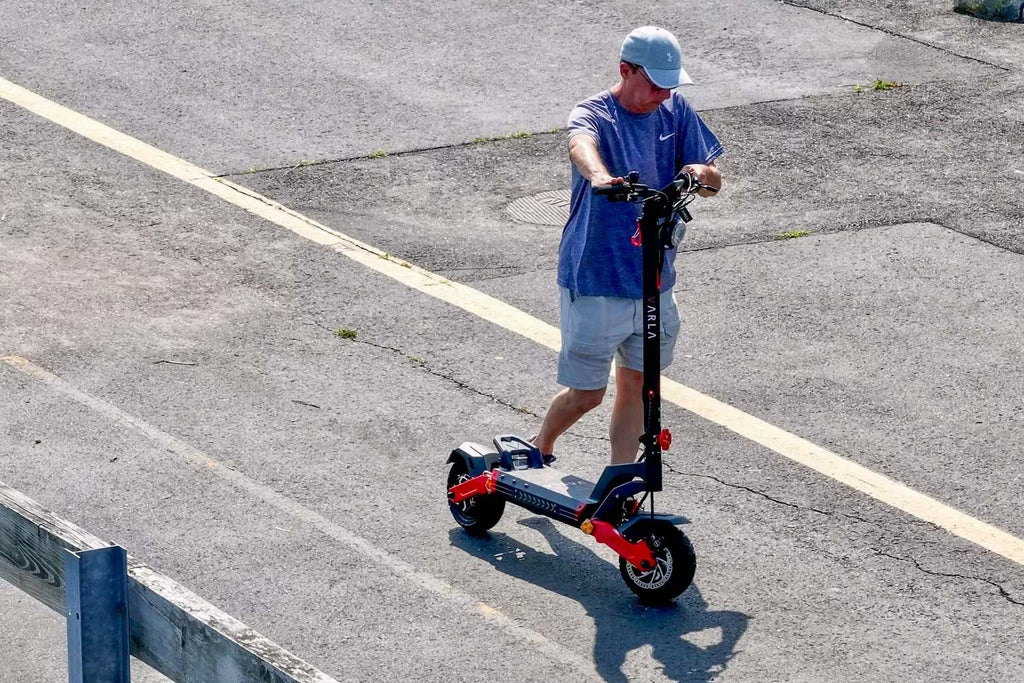
Zip Around Your City on a Best Electric Scooter on the Market
The Eagle One V2.0 electric scooter is a top-of-the-line choice for those looking to zip around the city with ease. This high-performance scooter boasts a powerful 1000W dual motor, allowing it to reach speeds of up to 40 mph. With a 40-mile range on a single charge, it provides users with the flexibility to navigate urban environments without worrying about running out of battery.
When considering taking the Eagle One V2.0 on public transportation, it's essential to keep in mind the scooter's dimensions and weight. With a weight of 77 lbs and the folded size. Its foldability does make it more manageable when boarding and alighting trains or buses. Be sure to research the electric scooter specific rules and regulations of your local public transportation provider to determine if the Eagle One V2.0 is allowed on their vehicles.
Unlike other brands, their durable construction is perfect for heavy adults. They also come with direct-to-consumer pricing, a 2-year warranty, and free shipping. Check out our website for more details on your next new set of wheels.
Conclusion
In conclusion, taking an electric scooter on public transportation can be a convenient and efficient way to navigate urban environments. To ensure a seamless experience, it is essential to be aware of the rules and regulations of the specific transportation provider, maintain proper etiquette, and consider factors such as the scooter's size, weight, and foldability. By doing so, you can effectively combine the benefits of electric scooters with the efficiency of public transit systems.
Newletter
Promotions, new products and sales. Directly to your inbox.
